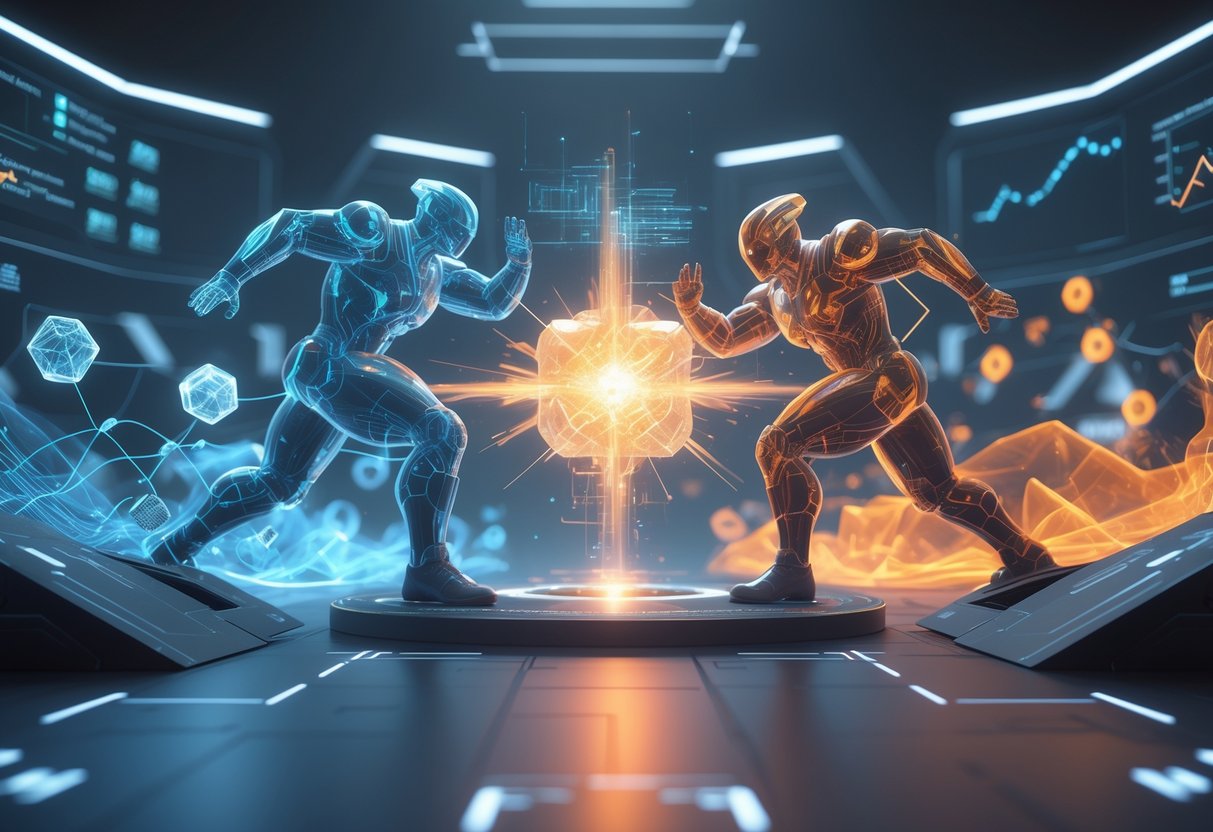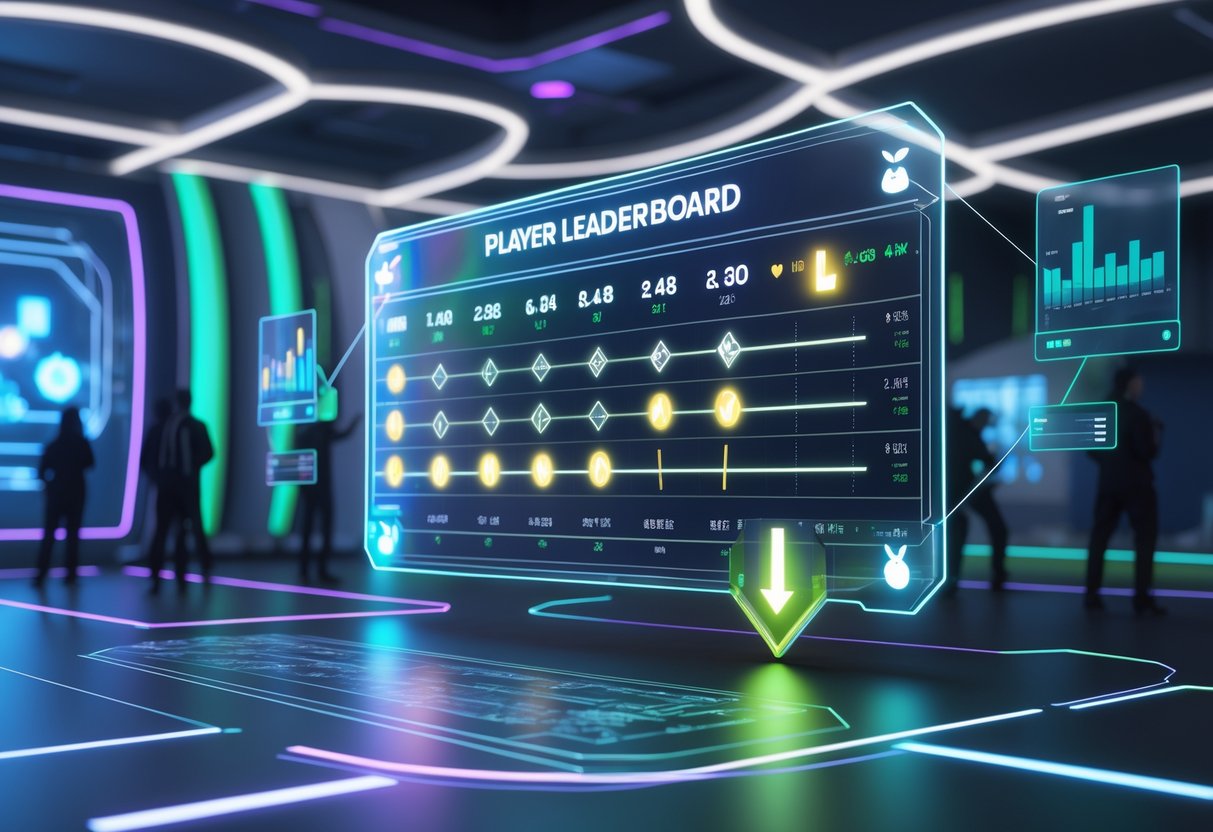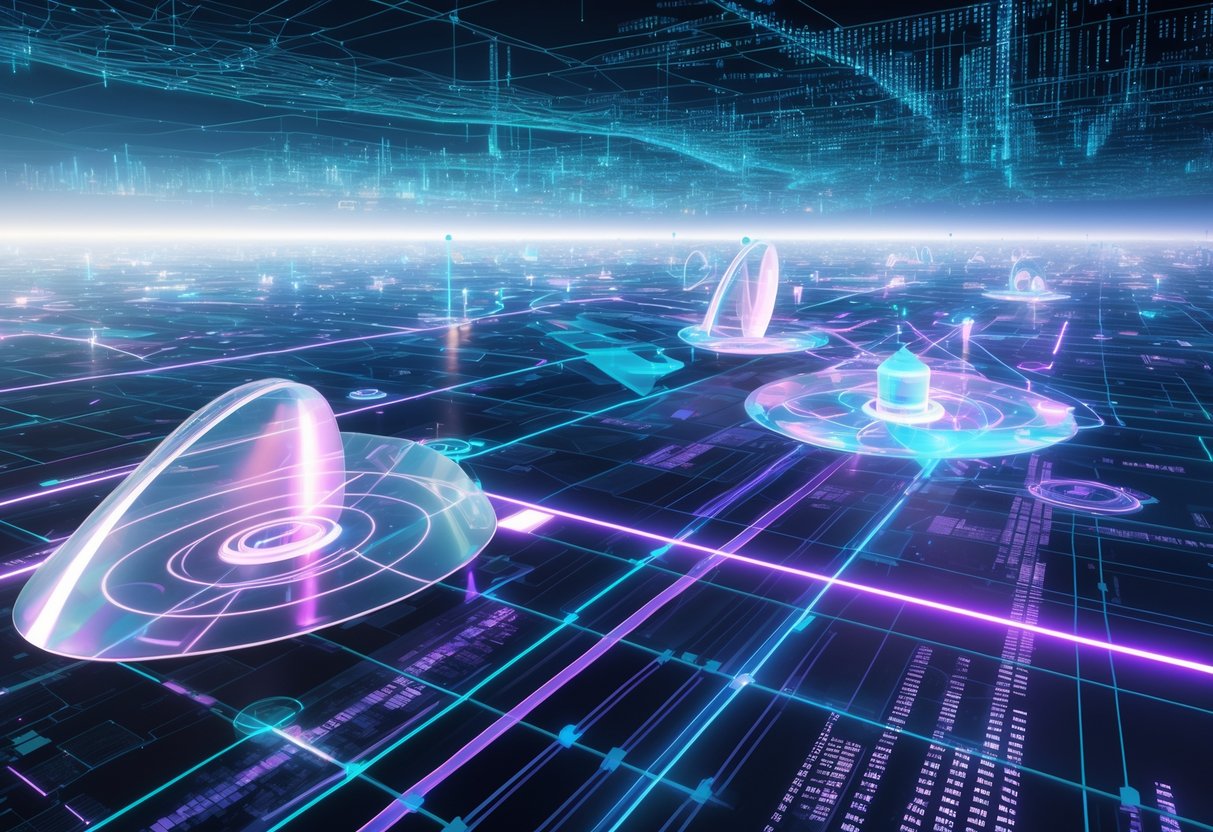Meta Shifts Explained: Key Drivers and Impact Across Gaming and Social
Updated On: November 12, 2025 by Aaron Connolly
What Are Meta Shifts?
Meta shifts happen when the most effective strategies, characters, or tactics in competitive games change over time.
Players might discover new approaches, or game developers might drop updates that shake up how everything works.
Definition of Meta
The meta stands for “Most Effective Tactics Available.” It basically means the current best ways to play a game if you want to win.
In esports, the meta covers which characters are strongest, what strategies actually get results, and how teams should approach each match.
It goes way beyond just individual skill.
The meta includes team compositions, item builds, and overall plans that boost your odds of winning.
You’ll find the meta at every skill level.
Professional teams pore over it before tournaments, while casual players follow it to climb the ranks.
Different regions sometimes come up with their own meta twists.
What works in European competitions might get totally ignored in Asia.
That’s why international tournaments get so interesting—different approaches collide.
Origins of Meta Shifts
Several things drive meta shifts.
Game updates lead the charge.
Developers regularly push patches that make some characters stronger or weaker.
Player discovery also changes the meta.
Someone tries out a weird strategy in ranked, and if it works, the whole community latches on.
This spreads like wildfire.
Professional play pushes meta shifts even further.
When top teams pull off something new at a big tournament, millions watch, and soon everyone’s trying it.
New content releases force the meta to change too.
When developers add new characters, items, or modes, everyone has to adapt.
Old tactics might suddenly flop, and new opportunities pop up.
Historical Examples in Gaming
League of Legends has gone through some wild meta shifts.
Early on, aggressive pushing ruled.
Later, the game slowed down, focusing on team fights and objectives.
Season 3’s “burst meta” flipped everything.
High-damage characters took over, making matches faster and more explosive.
Players had to rethink picks and item builds.
Counter-Strike’s meta has shifted with weapon and map changes.
When developers tweaked rifle accuracy or movement, pro teams had to start over.
Strategies that worked for years just died overnight.
Fighting games like Street Fighter get shaken up with every balance patch.
One update can turn a forgotten character into a tournament star—or send a top-tier pick crashing down the ranks.
Core Causes of Meta Shifts
Meta shifts kick off when developers update the game, when players find new tricks, or when new content drops.
These changes force players and teams to rethink their strategies and adapt.
Game Updates and Patches
Patches drive most meta shifts in competitive gaming.
Developers keep dropping balance updates that buff (make stronger) or nerf (make weaker) certain characters, weapons, or abilities.
A single patch can flip the script on which strategies work.
If a popular character’s damage drops by 10%, teams might ditch them overnight.
Here’s what patches usually shake up:
• Character balance changes – Heroes get stronger or weaker
• Item adjustments – Weapon stats or equipment get tweaked
• Map modifications – Terrain or objectives change
• System reworks – Core mechanics get overhauled
Pro teams spend days breaking down each patch.
They test new combos and strategies before the next tournament.
Sometimes the impact is instant.
When League of Legends introduced Cinderhulk items, suddenly everyone played tanks and the whole game felt different.
Community Discovery and Innovation
Players themselves often spark meta shifts by experimenting.
Someone tries something offbeat in ranked, and if it catches on, suddenly everyone’s doing it.
This kind of change doesn’t need a patch.
A pro might figure out that an ignored character counters the current meta, and the word spreads fast.
Social media turbocharges this process:
• Streamers show off new tricks to massive audiences
• Reddit dives deep into why certain things work
• Tournaments prove new tactics can win at the highest level
Aaron Connolly, a gaming journalist, puts it well: “The best meta discoveries often come from players willing to experiment when everyone else follows the crowd.”
Pro teams drive innovation too.
If a squad rolls out a wild new strategy at a big event, everyone else scrambles to catch up.
Community-driven shifts can sneak up on you.
They build momentum over weeks as more players jump on board.
Introduction of New Content
New characters, maps, or modes always shake up old strategies.
Fresh content gives players new tools that can counter what used to dominate.
Every new character release forces teams to learn the matchups and find counters.
One hero with a unique skill can make yesterday’s tactics totally useless.
Major content additions include:
| Content Type | Meta Impact | Timeline |
|---|---|---|
| New characters | High – changes team compositions | 1-2 weeks |
| New maps | Medium – affects positioning | 2-4 weeks |
| New items/weapons | Variable – depends on strength | 1-3 weeks |
| New game modes | Low for existing modes | Ongoing |
Tournament organisers sometimes ban fresh content for a bit.
Teams need time to practice, and nobody wants matches decided by chaos.
Competitive scenes need some stability to show off real skill, not just luck with new mechanics.
Most leagues roll out new content during the off-season instead of mid-tournament.
Meta Shifts in Competitive Gaming
Competitive gaming never sits still.
Pro players keep adapting, and ranked systems reflect the latest tactics.
Major tournaments send shockwaves through the scene, changing how millions play overnight.
How Ranked Play Responds
Ranked games become the lab for new meta strategies.
When pros debut a new agent combo or weapon setup on the big stage, ranked players rush to copy it.
League systems react within days after big tournaments.
Players climbing the ladder test out what they saw from the pros.
This creates a feedback loop—sometimes ranked players even influence what the pros do next.
Higher ranks adapt the fastest.
Diamond and above usually try new stuff first.
Lower ranks catch on later, after the strategies prove themselves.
Heads up: Not every pro strategy works in ranked.
Solo queue is a different beast from coordinated team play.
Some common ranked reactions to meta shifts:
- Agent pick rates jump or drop by 20–30%
- Weapon choices change based on what pros use
- Map strategies evolve as players copy pro rotations
Role of eSport Tournaments
Major tournaments light the fuse for meta changes.
When teams bust out new strategies under pressure, everyone pays attention.
Tournament patches usually land right before big events.
Developers drop balance changes, and teams scramble to adapt.
This leads to fresh strategies and surprises.
The most influential tournaments for shaping the meta:
- World Championships – Set the standard for the whole season
- Regional leagues – Try out new ideas with less on the line
- Masters events – Show off up-and-coming team comps
Teams spend months cooking up surprise strategies.
One unexpected pick or weird team comp can change everything overnight.
Prize pools over £1 million mean teams will do anything to break the meta.
That kind of cash keeps innovation alive.
Adaptation by Professional Players
Pro players have to learn new strategies fast after a meta shift.
If they don’t, they fall behind.
Teams grind 8–12 hours a day, learning new agent abilities, weapon patterns, and map changes.
Adaptation takes a flexible mindset.
Players who usually stick to one role might have to branch out if the meta demands it.
Support mains might suddenly need to play aggressive agents if things speed up.
Coaches watch hours of footage, hunting for new trends.
They set up practice focused on:
- New agent combos from recent games
- Updated positioning after weapon changes
- Fresh tactics from international teams
Teams that adapt quickest grab the edge.
Those that lag behind lose out on big tournament placements—and the money that comes with them.
Quick tip: Follow pro players on social media during major patches.
You’ll see what they’re practising before anyone else.
The Player Adaptation Cycle
When the meta shifts, players start a familiar cycle—figuring out what works, what doesn’t, and sharing discoveries with the community.
This involves digging deep, lots of trial and error, and spreading winning strategies as fast as possible.
Theorycrafting
Theorycrafting starts the second patch notes drop or new stuff lands.
Players open up spreadsheets, crunch damage numbers, and argue on Reddit and Discord.
What theorycrafters dig into:
- Changes to champion stats and what that means
- New item builds and which ones are actually worth it
- Team comp synergies
- Counters to new picks
Most of this happens outside the game.
Some folks make wild guesses with barely any data, while others use crazy-detailed models.
You’ll see tier lists, guides, and number crunching everywhere.
Learning and Practice
Once people have theories, they jump into matches to see what sticks.
This is where things get messy—a lot of ideas that look great on paper just flop in real games.
How players test new stuff:
- Custom games for mechanics
- Normals for low-pressure tries
- Training tools and practice modes
- Watching replays to spot mistakes
High-level players usually pick up new strategies in days.
Casuals might need weeks to catch up.
During this phase, matches get unpredictable.
Everyone’s experimenting, so you’ll see odd picks and wild plays.
Spread of New Strategies
Once a strategy works, it spreads fast—starting at the top and trickling down.
Pro players and content creators really speed this up.
How the meta spreads:
- Pros show the best ways to play
- Streamers teach thousands of viewers
- YouTube guides break it down
- Community chats refine and tweak things
This creates a constant loop.
As more people use a strategy, the meta settles.
Then someone finds a counter, and it all starts over.
The spread isn’t instant everywhere.
Some regions get new metas weeks before others.
Content Creators and Streamers’ Influence

Popular streamers and content creators now have massive sway over meta shifts in every competitive game.
Their gameplay choices, strategies, and advice can change how millions play—sometimes in just a few days.
Streamers Shaping the Meta
Top streamers shape meta shifts by making bold gameplay decisions and trying out new strategies. When a big-name streamer stumbles onto a fresh build or tactic, thousands of viewers rush to copy it in their own matches.
Streamers impact the meta through:
- Live demonstration of new strategies during streams
- Real-time testing of patches and updates
- Community feedback that shapes their approach
Game companies often give popular streamers early access to updates. This means streamers get to test new characters, weapons, or mechanics before anyone else.
Their first impressions and choices set the stage for new meta trends. Sometimes, one stream showing off an overlooked strategy can flip the competitive scene overnight.
Streamers also team up with game developers. They share feedback on balance changes and suggest tweaks based on their high-level play.
YouTube and Guide Websites
YouTube creators and guide websites spread meta knowledge to the wider gaming crowd. They put together tutorials and breakdowns that make tough strategies easier to understand.
YouTube content creators contribute by:
- Publishing in-depth guides explaining optimal builds and rotations
- Creating tier lists that rank characters and strategies
- Analysing professional matches to identify emerging trends
Guide websites back up video content with written tutorials and stats. These resources help players figure out not just what works, but why.
Some content creators stick to beginner-friendly guides, while others dive deep into advanced analysis for hardcore players.
Impact on Broader Player Base
Content creators influence way more than just their direct followers. Their ideas spread through social sharing and community chatter. Even players who never tune into streams end up feeling meta shifts from friends or online forums.
Content creator influence spreads through:
- Social media clips highlighting key moments
- Community discussions on Reddit and Discord
- Word-of-mouth recommendations between players
Gaming communities debate and dissect strategies that creators show off. This back-and-forth helps refine meta ideas over time.
Players try out streamer-inspired strategies in their own games. If something works, it spreads within smaller circles, pushing the original idea even further.
The ongoing loop between creators and players keeps the meta in flux. Shifts happen fast and keep evolving as the community reacts.
Developer Strategies and Philosophy

Game developers use specific methods to keep gameplay balanced and the competitive scene healthy. They look at player data, listen to community input, and run careful tests before changing the game’s direction.
Balance and Fairness Goals
Developers want to build fair competitive environments where multiple strategies can win. No single character, weapon, or tactic should rule the game.
In games like Counter-Strike 2, Valve tweaks weapon damage and movement speeds regularly. They try to make every map spot and weapon choice feel like a real option.
Key balance targets include:
- Win rates across different skill levels
- Pick rates for characters or weapons
- Match duration and pacing
- New player accessibility
Most developers shoot for a 45-55% win rate window. If something falls outside that, they know something’s off.
Balancing for both casual and pro play gets tricky. Sometimes, changes that help new players can mess up competitive integrity, so developers split the rules between ranked and tournament play.
Data-Driven Decision Making
Modern studios collect mountains of player data to guide their balance decisions. They track everything from button mashing to match results across millions of games.
This data shows which strategies get out of hand. If 80% of players pick the same character, developers know it’s time to step in.
Common metrics developers monitor:
- Character/weapon usage rates
- Average match length
- Player retention after updates
- Skill-based performance gaps
Companies like Riot Games share their data, showing how League of Legends champions perform at different skill levels. This openness helps players understand why changes happen.
But stats only go so far. Numbers can’t always explain why something feels frustrating or fun, so community feedback really matters.
Community Feedback
Professional players, content creators, and everyday gamers all weigh in on possible changes. Developers often run beta servers so dedicated players can test updates before everyone else.
The bond between developers and top players matters a lot. Pros see high-level strategy better than anyone, so their feedback can shape big decisions.
Feedback channels include:
- Public test servers
- Developer forums and Discord servers
- Direct communication with pro players
- Social media sentiment analysis
Smart developers listen to all sides. Sometimes, casual players complain about mechanics that are fine for pros.
We’ve seen developers like those behind Dota 2 work closely with their community. Their frequent updates often reflect both tournament results and hot topics from Reddit.
The trick is to fix real problems quickly but not overreact to short-term frustrations.
Counterplay and Meta Evolution

When certain strategies take over, sharp players find ways to break them, keeping competitive gaming lively. These counter-strategies push the meta forward and add layers of strategy that set pros apart from casuals.
Emergence of Counter-Meta
Counter-meta strategies pop up when players spot weaknesses in the top tactics. If tank-heavy comps dominate, players will start picking champions with percentage or true damage to cut through armor.
This process just happens in competitive scenes. Pro teams spend hours picking apart their opponents’ strategies, hunting for gaps.
Common counter-meta patterns include:
- Mobile champions rising against slow, powerful ones
- Split-push strategies countering team-fight focused metas
- Early game aggression beating late-game scaling compositions
Counter-meta ideas spread much faster now. What took months before can now happen in weeks, thanks to streaming and social media.
Strategic Depth Created by Shifts
Meta shifts force teams to build more than one strategy. This creates a rock-paper-scissors effect, where different comps beat each other.
Teams prep three to five different compositions for big tournaments. Each one has a job—some grab early objectives, some scale late, and others focus on team fights.
Key strategic layers include:
- Pick and ban phase turns into mind games
- Teams change their playstyle mid-game as opponents adapt
- Players need champion pools that cover multiple roles and strategies
This complexity is what separates pros from the rest. While ranked players might stick to one or two strategies, pros juggle several and swap between them on the fly.
Examples of Successful Counterplay
At the 2019 Worlds Championship, teams started picking Pyke support to counter traditional engage supports. His execute ultimate flipped team fights and gave sneaky gold advantages.
Lately, roaming support strategies have popped up to beat lane-focused metas. Instead of staying bot, supports roam and create numbers advantages all over the map.
Successful counterplay often involves:
- Surprise champion picks that catch opponents off guard
- Strategic twists like lane swaps or new objective priorities
- Using champion synergies that weren’t part of the meta before
The Funnel strategy from 2018 is a classic example. Teams funneled all gold into one hyper-carry, skipping the usual laning phase until Riot had to step in and change the rules.
These stories show how creative thinking can topple even the strongest meta, proving nothing stays dominant forever.
Impact on Player Progression and Rank

Meta shifts can shake up how fast you climb the ranked ladder or hang onto your spot. When balance changes hit, players who adapt quickly usually gain rank, while those clinging to old favorites might drop.
Climbing the Ranked Ladder
Meta shifts open the door for quick rank gains. Players who jump on newly buffed champions early often climb before the rest catch on.
Fresh strategies give early adopters an edge. When a champion gets buffed, not many know how to handle them yet. Skilled players can exploit this gap for a while.
You see this happen all the time in League of Legends. After a patch, certain champs suddenly have much higher win rates for a week or two.
Quick adaptation takes some effort:
- Reading patch notes closely
- Testing changes in practice modes
- Watching high-elo streamers try new stuff
- Tweaking item builds and runes
The best climbers treat meta shifts as chances to learn, not roadblocks. They dig into why changes happened and what it means for their play.
Lots of players gain 2-3 divisions during big meta shifts by sticking to 1-2 strong champions instead of spreading themselves thin.
Maintaining Competitiveness
Staying at your rank gets tough when meta shifts make your go-to picks less effective. You have to balance comfort with what’s actually good right now.
Champion pool flexibility is huge during transitions. One-tricks usually struggle more than players with 3-4 solid picks across roles or styles.
The trick is in gradual adaptation, not overhauling everything. Figure out what parts of your game still work and layer in new stuff.
| Adaptation Strategy | Risk Level | Rank Impact |
|---|---|---|
| Learning 1-2 new champions | Low | Stable climb |
| Completely changing role | High | Potential drop |
| Adjusting existing builds | Very Low | Immediate benefit |
| Following pro player trends | Medium | Variable results |
Heads up: If you try to change everything at once in ranked, it usually backfires. Test new things in normals before risking your LP.
Most players keep their rank by making small, steady tweaks instead of blowing up their whole approach.
Adapting to New Playstyles
Meta shifts can force you to pick up new mechanics or rethink your strategy. You’ll need to build fresh muscle memory and decision habits to keep up.
Mechanical changes take longer than strategic ones. Playing more aggressively or defensively takes dozens of games to feel right. New champion mechanics? Even more practice.
Try focusing on one big change at a time. If you’re learning new champs and switching up teamfighting at once, you’ll probably get lost.
Common adaptation challenges include:
- Timing for trades and engages
- Map positioning with new champs
- Tweaking item builds for new strategies
- Shifting teamfight roles and priorities
Practice modes help a ton. Use training tools to nail down combos or positioning before jumping into ranked.
Gaming expert James Connolly says players who spend 30-45 minutes a day on focused practice during meta shifts adapt about 50% faster than those who just grind ranked.
The best players embrace discomfort during these times. They accept some short-term losses while building new skills that’ll pay off down the road.
Meta Shifts Beyond Gaming

Meta shifts aren’t just a gaming thing—they happen all over digital platforms where algorithms and user behaviour keep changing. Social media sites update their systems all the time, forcing creators and users to rethink how they stay visible and engaged.
Social Media Algorithm Changes
Social platforms switch up their algorithms constantly. These changes decide what posts people see and how stuff spreads.
Facebook might push video over photos one week. Instagram could suddenly boost posts with more comments. TikTok is always tweaking what makes a video go viral.
Common algorithm changes include:
- Favouring new post formats like Stories or Reels
- Tweaking how engagement is measured
- Changing timing for post visibility
- Adjusting reach for business versus personal accounts
These updates force everyone to scramble and rethink their approach. What worked last month might flop after an update.
Platforms don’t always warn users. Sometimes you wake up and your usual tactics just don’t work anymore.
Influence on Content Creators
Content creators really feel these meta shifts the most. Their income relies on views, likes, and shares.
When YouTube changes its algorithm, creators scramble to adapt. Some jump from long videos to shorts. Others just toss out their entire posting schedule and start fresh.
Creators usually react by:
- Testing out new content formats right away
- Watching analytics obsessively
- Joining creator groups to swap tips
- Spreading out to different platforms
Many creators lose followers during big shifts. The ones who pivot fastest usually come out ahead.
Gaming expert James Connolly says successful creators treat algorithm changes like game patches—they study what’s new and tweak their strategy.
Shifted User Engagement Patterns
Users always change how they interact after platform updates. These shifts spark new meta patterns.
Short-form videos exploded after TikTok took off. Now, everyone expects quick, fun content everywhere. Instagram, YouTube, even LinkedIn—none of them escaped this trend.
Current engagement trends:
- People tune out of long content faster
- Visual posts get more interaction
- Authenticity beats polish almost every time
- Peak hours matter more for engagement
Users pick up new features way quicker than you’d think. Instagram Stories replaced a lot of regular posts. Twitter Spaces even gave podcasts a run for their money.
These patterns push businesses and individuals to keep tweaking their digital strategies. What worked five years ago on social media? Pretty much useless now.
The Future of Meta Shifts

Gaming metas just keep evolving as tech gets better and player communities grow. Expect even faster changes thanks to AI-driven balance updates and more direct community feedback.
Predicted Trends in Gaming Metas
AI-driven balance changes speed up how quickly metas shift. Games like League of Legends use data analytics to spot overpowered strategies in days, not months.
We’ll probably see real-time meta adjustments become the norm. Developers can roll out micro-updates during big tournaments to keep things interesting.
Community-driven meta discovery moves faster because of streaming. Top players show off new strategies on Twitch or YouTube, and suddenly everyone’s trying them within hours.
Cross-platform meta sharing means a strategy from PC jumps to console or mobile almost instantly. That leads to global metas instead of platform-specific ones.
Seasonal meta resets feel more planned now. Games like Fortnite show that players actually like big shake-ups every few months.
With machine learning coaches on the rise, even casual players can keep up. These tools break down your gameplay and suggest what’s working in the current meta.
Long-Term Effects on Online Communities
Community fragmentation keeps growing as metas change faster. Casual players struggle to keep up, and the gap widens between hardcore and occasional players.
Content creators have more influence than ever. When popular streamers showcase a new trick, the meta can shift overnight.
We’re seeing meta nostalgia movements too. Some players demand “classic” versions of games, which splits the community.
Educational content is now essential. Players need constant guides and coaching just to keep up, so YouTube tutorials and coaching services are everywhere.
Competitive scene volatility hits pro esports hard. Teams have to adapt constantly or get left behind, making careers way less stable.
Regional meta differences might disappear soon. As global communication gets easier, local strategies get countered faster, and everyone ends up on the same page.
Ensuring a Fair and Enjoyable Meta

Keeping competitive gaming fair and fun takes constant effort. We need systems that stop exploitation but still let everyone enjoy the game, no matter their skill.
Upholding Fairness Across All Levels
Fair play sits at the core of any successful esports meta. Developers use strict anti-cheat systems, set tournament rules, and keep rankings transparent.
Anti-cheat measures like VAC (Valve Anti-Cheat) and BattlEye catch cheaters in real time. Most big tournaments make players use monitored hardware too.
Tournament organizers set standard equipment rules. Players have to use approved gear and settings, so nobody gets an unfair hardware boost.
Ranking systems rely on math to match players fairly. Games like Counter-Strike 2 and Valorant use ELO-based systems, tracking your performance over time.
| Fairness Tool | Purpose | Games Using It |
|---|---|---|
| VAC | Cheat detection | CS2, Dota 2 |
| BattlEye | Real-time monitoring | Rainbow Six Siege |
| ELO ranking | Skill-based matching | Most competitive titles |
Pro leagues bring in referees for matches. Officials watch for rule breaks and tech problems, catching stuff that automation might miss.
Balancing Enjoyment for Veterans and Newcomers
Making games fun for newbies and veterans takes smart design and good matchmaking. We need mechanics that keep experts engaged but don’t scare off beginners.
Skill-based matchmaking (SBMM) sorts players by skill. Newcomers face each other, not pros, so they don’t get crushed right away.
Most games add tutorials and practice ranges. Valorant’s shooting range lets you learn weapons without pressure. League of Legends has bot matches for no-stress practice.
Seasonal resets give everyone a fresh start. Rankings get a partial wipe every few months, and new patches shake up the meta.
| Feature | Veteran Benefit | Newcomer Benefit |
|---|---|---|
| Ranked seasons | Fresh challenges | Clean slate opportunities |
| Unranked modes | Casual practice | Stress-free learning |
| Tutorial systems | Mechanic refinement | Foundation building |
Community features like mentorship programs help, too. Discord servers and in-game guilds make it easier for experienced players to help out newcomers.
Frequently Asked Questions

Meta shifts happen for all sorts of reasons—game updates, rule tweaks, new technology, or just the way players figure things out over time. If you want to stay ahead, you need to know what’s driving these changes so you can adapt.
What causes changes in strategic approaches within competitive environments?
Game patches shake up strategy the most. When developers buff or nerf characters, weapons, or abilities, players have to find new paths to victory.
Pro tournaments drive change too. When top teams show off new strats on the big stage, everyone else either copies or counters them.
Community discoveries matter a ton. Sometimes a regular player invents a combo or tactic nobody saw coming, and it spreads fast through social media and streams.
Can you shed light on the common drivers behind changes in game dynamics?
Balance updates happen all the time in competitive games. Developers watch win rates and listen to player feedback before tweaking things.
New content releases turn everything upside down. A new character, map, or mode forces players to learn and adapt.
Esports tournaments put pressure on the meta. Teams work for months on secret strategies, and once they’re revealed, the whole scene shifts.
How do adjustments in rules or systems influence the overall strategies of players?
Rule changes force players to adapt on the spot. If a tournament switches from best-of-three to best-of-five, teams rethink how they prepare and manage energy.
Ranking system tweaks change how people play. If the game rewards aggressive play instead of defense, the meta flips fast.
Ban and pick phase changes in games like League of Legends totally reshape team compositions. Players need to expand their champion pools and get creative.
What’s the impact of new technology or tools on established tactics and strategies?
Better hardware opens up new strategies. Higher refresh rates and faster internet let players do things that weren’t possible before.
New peripherals change how players execute. Custom keyboards, mice, and controllers give some players an edge that can shift the meta.
Streaming and replay tech spreads strategies faster. Players break down pro games frame by frame and copy the best moves just days after a big tournament.
Could you explain how player community trends affect prevailing approaches to gameplay?
Social media spreads strategy changes in a flash. One viral clip can change the meta across all ranks within a week.
Content creators have huge sway. When a streamer or YouTuber shows off a new strategy, their audience jumps on it in ranked games.
Community guides and tier lists shape what people play. Sites that rank characters or tactics influence millions of player choices every patch.
What role does player skill evolution play in shifting the dominant strategies in a game?
As players get better mechanically, they start to break down simple strategies. People in the community find ways to counter those basic moves, so everyone has to get more creative.
When folks reach higher skill levels, they start using advanced strategies. Stuff that looked impossible a few years back just becomes the new normal as everyone keeps leveling up together.
Every new generation of players tosses in their own ideas. Sometimes, these fresh faces spot strategies that longtime players totally miss because they’re stuck in old habits.

